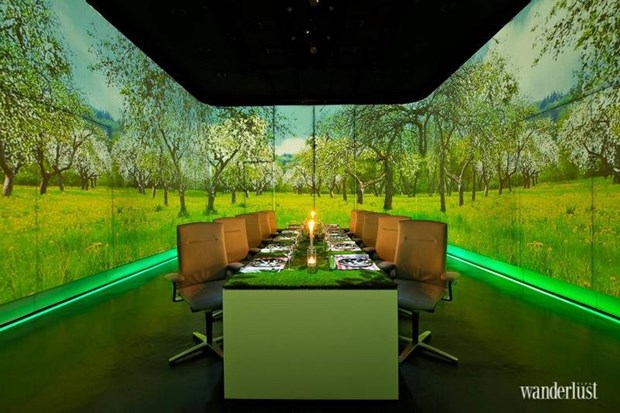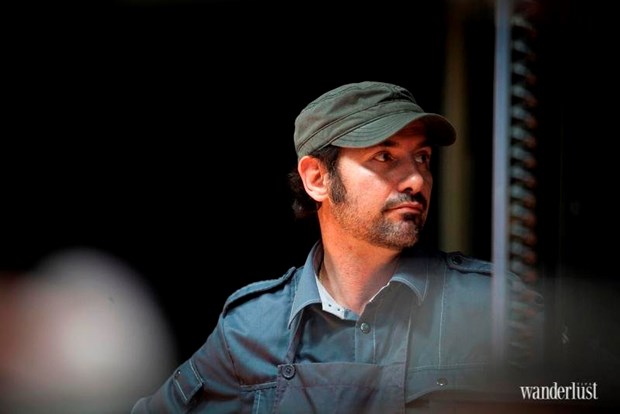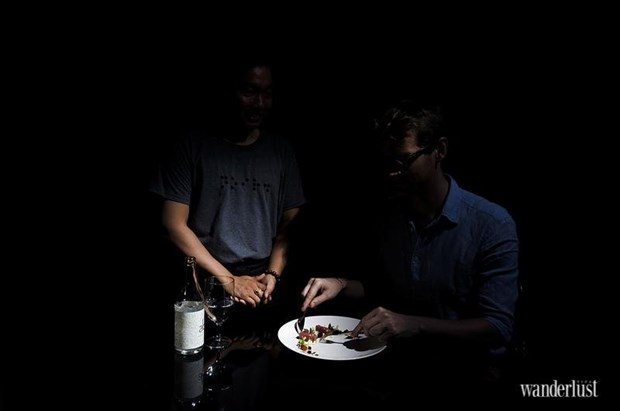My
fate with cuisine is intertwined with my boundless passion and pleasure of
enjoying food. Many have asked “What is the difference between having a good
meal and enjoying it?”
It
is not a simple task to give a concrete answer to such a broad question, but it
is safe to say that beyond the enjoyment is the desire for exploration and
discovery. The philosophy of gastronomy carries the same sentiment. Eating good
food is a conditional reflex of the physical body, while gastronomy is a way of
life. After all, gastronomy runs the course of using all your senses to achieve
the most divine sensations; but of course, how far this will stretch depends on
your personal experience.
To
eat, in the simplest figure of speech, is to play and the game of gastronomy
cannot be bound by Michelin stars, commonly regarded as the highest merits of
the culinary arts; but rather, it is a journey of discovery to find the most
unique and refined experience it can offer.
Imagine
a style of dining with no particular location – a deserted warehouse, a farm or
the private house of a stranger. Welcome to the secret dining club – where you
are ready to indulge in a culinary experience by dilettante chefs, and to sit
with strangers from all over the world, who share the same passion for
exploring the art of food. It is a sweet retreat from the symbolic yet mundane
paths that lead to Michelin stars.
This
culinary trend began in San Francisco with “Ghetto Gourmet”, which was located
beneath a dining club, and whose notoriety was spread through word-of-mouth by
food connoisseurs who had grown increasingly jaded with the then current,
monotonous culinary practices and standards. Along with the blossoming of the
culinary industry within the last decades, this trend has, and currently is,
quietly rising in various shapes and forms in the East and the West, in spite
of countries and borders. A fine dining meal, which previously demanded a set
style of presentation and the following of rigid rules, is no longer considered
a must-have standard in a culinary trend that is vastly changing and growing.
These futuristic innovators have created a revolution in the gastronomic game.
This
article will briefly touch on a few exceptional experiences I have had the good
fortune to enjoy during my travels in Asia.

Our
first stop is Ultraviolet in Shanghai, the kind of restaurant that dreams are
made of, where patrons live and breathe the parties of light, sound, images,
scents and of course, the restaurant experience itself. A secretive location is
selected for the dinner, which is then only served to ten patrons at the very
most at each culinary performance.
Close
your eyes and imagine yourself enjoying a fish dish under the sea, with
thousands of fish swimming among one another; listen to the splashing and
swishing sounds of sea creatures that feel almost real. As you listen to the melodious
background music, you can almost imagine smelling the saltiness of the oceans,
the sharpness of the seas, and of course, in reality, the fragrance of the
food. Under these spatial guides, each and every one of your senses are
heightened to the utmost to allow you to marvel in the delight and satisfaction
of one of the most incredible experiences of your life. In this way,
Ultraviolet has managed to please even the most fastidious food connoisseurs.

Chef
de Cuisine Paul Pairet, a man who has stepped over every culinary boundary,
will concoct inventive and stunning dishes for you, with myriad ingredients –
frozen foods, canned fish and even a lemon tart, in which the lemon and the
tart are layered upon one another. His unlimited inspiration has blazed a trail
in the dining world. A world that was becoming way too conventional and banal.
It is no surprise that Ultraviolet, no matter how mysterious and unpredictable,
has managed to stay staunchly within The World’s 50 Best Restaurants list,
until now.
If
ten patrons are too many for a meal, then Aronia de Takazawa would be the most
apt restaurant for those who enjoy dinner alone as I do. Regarded as one of the
smallest and hardest to find restaurants in the world, and located in an
unnamed area in Akasaka district in Tokyo, Aronia đe Takazwa has just two
tables on which to serve their patrons.
It
is easy to believe yourself to be Alice, and get lost in the wonderland of Chef
Yoshiaki Takazawa sampling bizarre dishes like foie gras crème brûlée with
mango, or curry ice cream with smoked crispy Ezo venison topping. The tea party
with a Gothic theme will provide explorers with a once-in-a-life-time
experience. The waiting time for a table from the confirmation of your booking
is six months, obviously, a puzzle not meant for the impatient; however, the
joy of savoring the taste of victory is immeasurable.
Another
renowned representative from the East is Da Ping Huo, an innovative location
inside a building, on a platform, in the restaurant-auditorium-gallery at the
arts center of Hong Kong. This is the place I frequented to enjoy spicy Sichuan
dishes, to listen to the proprietress singing Opera each night, to take a
relaxing stroll and to gaze at the artwork of amateur Hong Kong artists that
were exhibited there. Simultaneously eating, listening to Opera and looking at
the arts is such a fascinating and poetic mix of activities.

On
the last stop of this journey, I will mention two of the distinguished
representatives from Vietnam: Noir Dining in the Dark in Saigon and French
Grill in Hanoi. While Ultraviolet opens all our senses through its meals, Noir
Dining in the Dark takes us on a journey reminiscent of the endless night. When
our visual sense is deprived, the olfactory, gustatory, olfactory, somatic
senses and perhaps even our sixth sense, are enhanced more than ever. Even if
we were provided with a guide, I believe most of us would feel like fish out of
water the first time we dine in the pitch black – where sight is no longer a
criterion to judge a meal, when the rest of your senses react more honestly and
allow you to fully explore the true meaning of the art of enjoying food. I will
let you experience and evaluate this night time adventure your own way.
My
last few words will be a dedication to a rare annual performance called the
Molecular Night at French Grill. Even if I have yet to participate in this
fascinating event, I have to admit the Molecular Gastronomy and Mixology Night
is a bold, yet wise move from the French Grill.
Even
though molecular gastronomy is no longer foreign terminology to Michelin
diners, innovation in the most state-of-the-art culinary techniques and a
molecular gastronomy performance under the guise of a Chemist’s Laboratory is a
highly original and inventive idea.
From
the perspective of a person who appreciates the gastronomic journey as I do, I
believe that the Molecular Night has posed a challenge for the participants in
that it puts the focus on each of the ingredients used in the dishes. The main participants
of the meal are no longer the patrons themselves, but also the results of these
chemical reactions. The experience does not merely come from the senses but
also the ingredients themselves. Instead of listening to external sound,
patrons perceive the faintest and subtlest oscillation of the dishes on a
molecular level. Therefore, by extension, humans are not always the key players
in this gastronomic game. The ingredients are able to speak out in their
unadulterated forms.
The
path of exploring and searching for innovative ways to enjoy gastronomy is
similar to countless scientific experiments: there are successes, and there are
failures, but they cannot even begin without creativity. In any frame of
reference, the future of gastronomy is always an unknown number that needs to
be received, contemplated and purposely appreciated with our most refined
senses.
By Wanderlust
Tips